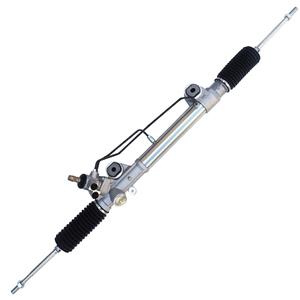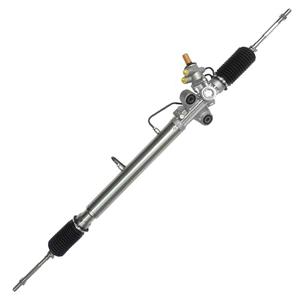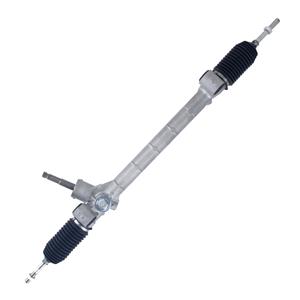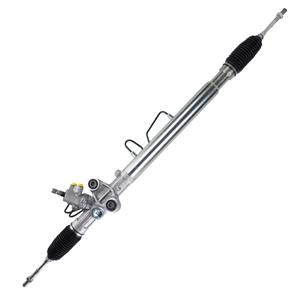-
The gears and racks in the rack and pinion system are metal parts, which will inevitably wear out during long-term use. When the wear of the gears and racks reaches a certain extent, the fit between the rack and the gear may loosen, causing the hydraulic oil to leak from the joint.
-
When the driver turns the steering wheel, the rotational motion of the steering wheel is transmitted to the pinion through the steering shaft. The rotation of the pinion drives the rack to move linearly, which pushes the wheel to turn left or right. This process accurately transmits the driver's steering input to the wheel to achieve vehicle steering control.
-
The reasons for stiff power steering are: 1. Insufficient or leaking hydraulic steering oil 2. Power steering pump failure 3. Steering rack wear or damage 4. Hydraulic oil quality problems 5. Belt problems 6. Air entering the hydraulic system 7. Tire problems
-
1612-2024
How can I make my power steering softer?
If your vehicle is equipped with a hydraulic power steering system, the condition of the hydraulic oil is crucial. Over time, the hydraulic oil may become dirty, lose viscosity, or even bubble, resulting in a decrease in the efficiency of the steering system. Therefore, regularly checking the quality of the hydraulic oil is the key to maintaining soft steering.
-
The structure of the recirculating ball steering system is relatively complex, involving screws, nuts, recirculating steel balls and multiple connecting rod components. This complexity makes the system more time-consuming and costly to manufacture and repair. In contrast, the rack and pinion steering system has a simple structure, consisting only of a rack and a pinion, which makes it cheaper to manufacture and relatively easy to maintain.
-
The most common way to drive the power steering pump is through the engine's belt system. Traditional hydraulic power steering pumps are usually driven by the engine's belt. The engine belt is connected to the crankshaft of the engine. As the engine runs, the belt drives the shaft of the power steering pump to rotate, so that the pump works.
-
The manual steering system relies entirely on mechanical transmission, and there is no power steering device in the system. The steering force is directly applied by the driver and transmitted to the wheels, so there is no need for a power steering pump.
-
The biggest advantage of the hydraulic steering system is that it significantly reduces the driver's steering load. In a mechanical steering system, the driver needs to apply a large force to turn the steering wheel, especially when driving at low speed or parking, this force requirement will be more obvious.
-
In summary, the most efficient steering system should be the electric power steering system (EPS). This is because it performs well in energy efficiency, response speed and driving experience.
-
Whether it is a hydraulic power steering system or an electric power steering system, wear of mechanical parts is inevitable. This type of wear usually starts to show up around 100,000 miles, but it also depends on driving habits and road conditions.




